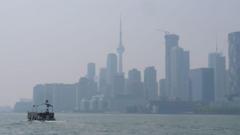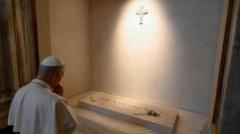In Chicago, known as a hotspot for migrating birds, a new initiative is transforming a notorious bird killer into a safer environment. The McCormick Place conference center, located along the picturesque Lake Michigan shoreline, has been recognized for its lethal glass architecture that has claimed countless avian lives. As spring migration peaks in late April, the city’s wildlife conservation community is on high alert, mobilizing volunteers to rescue injured birds and count fatalities.
Historically, migrating birds, disoriented by reflections and city lights, have been vulnerable to crashing into glass structures. Such incidents can lead to significant population declines among various species. In response, Chicago has introduced a protective glass treatment at the McCormick Place, designed to deter birds by creating a visible pattern. This improvement aims to address the environmental challenges that modern urban designs inadvertently create.
By implementing these new safety measures, Chicago hopes to see a dramatic decrease in bird fatalities during peak migration. The effort is part of a broader initiative to find local solutions to pressing environmental challenges, a movement showcased in their ongoing series, "50 States, 50 Fixes." With these changes, Chicago is stepping up as a model for how metropolitan areas can balance urban development with ecological preservation, turning deadly skyscrapers into safer spaces for our migratory friends.
Historically, migrating birds, disoriented by reflections and city lights, have been vulnerable to crashing into glass structures. Such incidents can lead to significant population declines among various species. In response, Chicago has introduced a protective glass treatment at the McCormick Place, designed to deter birds by creating a visible pattern. This improvement aims to address the environmental challenges that modern urban designs inadvertently create.
By implementing these new safety measures, Chicago hopes to see a dramatic decrease in bird fatalities during peak migration. The effort is part of a broader initiative to find local solutions to pressing environmental challenges, a movement showcased in their ongoing series, "50 States, 50 Fixes." With these changes, Chicago is stepping up as a model for how metropolitan areas can balance urban development with ecological preservation, turning deadly skyscrapers into safer spaces for our migratory friends.




















